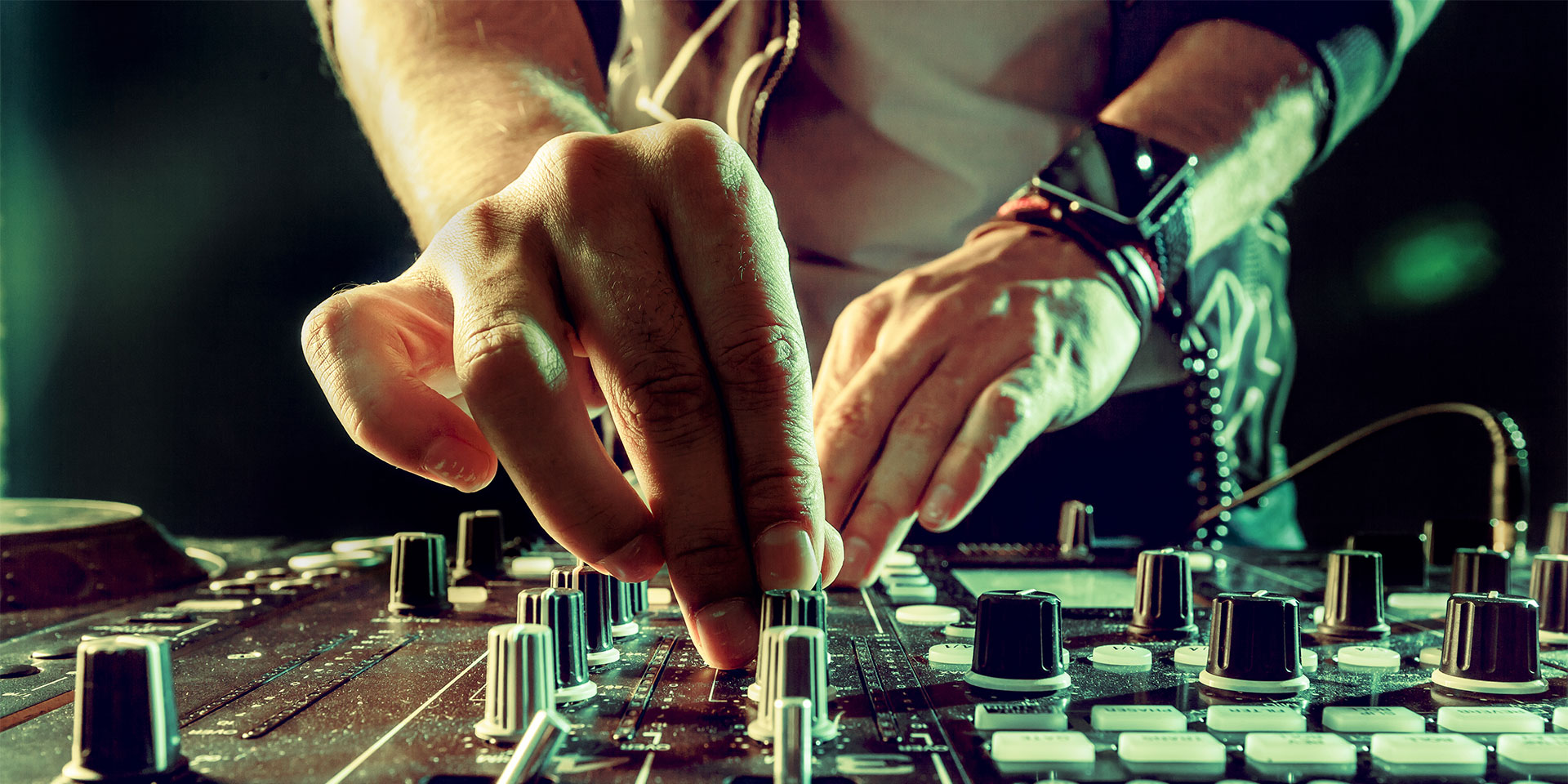With his hands clasped on the barbell, the superstar stares blankly and tells his personal trainer that his body needs time to adjust because he has been suffering from anxiety for a long time. Because of this, his body does not differentiate between cardio and panic. Two years later, on April 20th, 2018, the lifeless body of the famous DJ Avicii was found in his hotel room in Muscat (Oman), where he was on vacation. Police did not use the word “suicide”, but an equivalent: “There are no signs of criminal intent”. Avicii had given up.
Avicii is the stage name used by the Swede Tim Berling and transformed into a brand by his manager, Iranian Arash Pournouri. In Sanskrit, “avici” means “without waves” and in Buddhism, it refers to a cube 300,000 square kilometres on each side, located under the divine earth (the unseen world), in which the dead who committed reprehensible deeds suffer almost indefinitely, before being reborn.
It is a name that was not prophetic to Tim Berling. Not only did he start making waves at the age of 16—an age at which most teenagers still live off their parents’ money, and their main accomplishments are the irresponsible imitations of adult vices—but he never left the “cube” of the suffering that put an end to an explosive talent, doubled by the titanic work of a man who, when he promised something, could do nothing but keep his word, no matter how much it cost him.
This is the portrait of Tim, as captured by director Levan Tsikurishvili in the documentary “Avicii: True Stories”, broadcast in April 2019 by BBC 3. The artist had agreed that the director would go everywhere with him and make a film in which he let himself be truly known. The world would be able to understand what he could not explain in words, no matter how hard he tried to: the enormous pressure and the colossal stress to which he was subjected as an artist.
Backstage filming, spread over several years, but also an impressive amount of personal footage, from his or his family’s archives (the advantage of the digital age in which we breathe through our phones), have managed to give viewers otherwise impossible access to Avicii’s life, from his perspective. The atmosphere of the film is heavy because we know how the story ends from the very beginning. Still, the director does an extraordinary job of juxtaposing statements from Tim and the people in his circle. This makes the audience understand exactly what is happening and realise that the artist’s tragic fate could have been avoided.
The pivot of destiny
From the beginning, the film has a negative character who is disliked for his arrogant attitude and the business lies he brags about: Tim’s manager, Arash “Ash” Pournouri. Ash was the first to see in Tim the prodigious artist he would become when he was just a 16-year-old with a passion for electronic music. He discovered him on a forum, where Tim would post his creations, and invited him to meet up. Tim “brought his friend ‘cause he was too scared to meet me alone,” Pournouri says in the documentary. If so, Tim’s initial intuition could have freed him from much of the suffering of working with Ash.
The manager kept all the promises he made to Tim. In just a few years, he took him to the heights of success in EDM (electronic dance music). Tim was highly regarded by the most famous DJs of the time. Tiesto and David Guetta had only good things to say about him and his music, and artists such as Madonna, Coldplay and Lenny Kravitz were just some of the big names who received compositions or produced with Avicii. However, the 813 shows held by Avicii between 2011 and 2015 alone meant not only reaching the highest level of fame a global impact DJ could aspire to, but also the physical destruction of an extremely talented and unusually responsible young man.
Over 800 shows in five years meant an average of one show every two days. Given the fact that the performances took place all over the world, which sometimes involved long trips, this average becomes ridiculous. The artist performed almost non-stop. He admitted in the documentary that, over the years, he had spent most of his time away from home, and that when he returned for a few weeks, he no longer felt that he belonged to the place.
Pournouri had promised to help Tim focus only on composing and public performances. And he kept his word. But in order to turn Avicii into a global brand, it was necessary to suppress Tim. Tim’s life was engulfed in all that Avicii meant: obsessive composition work, endless trips, concert after concert, interviews, media appearances, and millions of dollars. Tens of millions of dollars.
Frightened by his previous entrepreneurial failures, Pournouri made sure he was the only one controlling Tim’s career and secured a fat percentage of his earnings: no less than 50% of his earnings, according to some sources. When Tim could no longer cope with the inhumane schedule and began demanding the postponement or cancellation of concerts, the manager accused him of not understanding the value of money.
Right in front of the cameras filming him for the documentary, Pournouri condescendingly confessed that, in a way, it’s understandable why: Tim was propelled into his career when he was still a teenager. Therefore, the fact that he had invested that time in music and nothing else deprived him of opportunities to grow up. Pournouri was right, but he himself was the archangel of the industry that took over Tim’s existence.
Addicted to euphoria, alcohol and opioids
Avicii shone on stage and was recharged by the love of his fans, confessing that during his shows he felt the euphoria of being accepted by huge crowds of people. He was addicted to this feeling just like a parachutist is addicted to the euphoria of being close to death and getting away at every jump. But Tim had another addiction: alcohol.
In the documentary Tim is never drunk, but he confesses that he drinks before shows, as he knows that all the great DJs have been drinking for decades and nothing bad seems to happen to them. In January 2012, he was hospitalised in New York City with acute pancreatitis, which caused him unbearable pain.
“It feels like someone is stabbing you in the stomach and the back simultaneously… You can’t really do anything about it. You just need to not drink water and not eat. And to be able to survive the pain they give you pain medicine,” he says in the documentary. Unfortunately, the drugs were not helping him either, because the doctors prescribed him an opioid which he became addicted to and which practically did not rid him of his pain.
Obligations to perform entered the hospital room along with the managers who came to visit him, and at their insistence, Tim agreed to continue with his appearances on stage, despite the pain. The documentary emotionally captures the irreconcilable clash between his sincere love for his fans, who could not understand the torture that Tim endured in order to be in front of them, and Tim’s growing hatred for the posture in which he was forced to be. He had promised to mix and many other people depended on his performance. The cancellation meant not only a financial loss, but also a reputation loss, which hit not only him as a brand, but also the entire Avicii team.
Alcohol seemed to help him push through and made him overcome his own survival instinct, which screamed through every pore for him to leave the stage. Tim was confused at the huge emotional impact his lifestyle had on him. Everyone around him, he would confess, seemed to be doing just fine. He was not, and he didn’t understand why. Why did everything feel so intense? Why was he constantly stressed? Why couldn’t he relax, not even when he took a break? Why did he feel like he was burning along with the fireworks in front of the huge stage on which he was performing?
The final chapter
In 2014, the artist was hospitalised again, as doctors had to intervene urgently to remove his appendix. They informed him that they would have to remove his gallbladder as well because it also showed signs of failure and it was better to operate then, to avoid any issues during the following tour.
The pain had become a constant in Tim’s life again, and this time, he said, it lasted four times longer than the previous time. He couldn’t see a way out. He started doing therapy, tried a few dozen diets, started doing sports and changed significantly, but not sufficiently, the way he organised his tours. He seemed to be on a better path. He had started a composition tour with friends: they went by bus to the most spectacular natural places in the world and composed there. It seemed idyllic, but it was just as exhausting for Tim.
He started reading Carl Jung, and from his books, he realised that he was, in fact, an introvert. The discovery had the weight of a true revelation. It helped Tim realise his habit of forcing himself to be extroverted, believing that this was what the world expected from him. Unlike the Avicii who shone on stage, the real Tim was a shy person who hated small talk and preferred having deep and meaningful conversations instead. However, the music industry was not a place for that.
The money-making machine began to rattle louder and louder for him, and with a fresh understanding of the new discoveries about himself and what he wanted, Tim began to firmly refuse concerts. Then, in 2016, he announced that he was terminating his collaboration with Ash Pournouri and retiring from the tumultuous tour life to return to his real love: composition.
After six years of unimaginable intensity, retirement hit Tim like a shockwave. He now had all the space to understand his trauma, but he did not have enough inner resources to keep it from controlling him. On April 20th 2018, he took his own life by slashing himself with the shards of a wine bottle.
Fragile souls
On April 26, his family published an open letter noting that “our beloved Tim was a seeker, a fragile artistic soul searching for answers to existential questions. An overachieving perfectionist who travelled and worked hard at a pace that led to extreme stress. When he stopped touring, he wanted to find a balance in life to be happy and be able to do what he loved most—music. He really struggled with thoughts about Meaning, Life, Happiness. (…) Tim was not made for the business machine he found himself in; he was a sensitive guy who loved his fans but shunned the spotlight.”
Clare Scivier, a former artist manager who left the UK music industry to become a behavioural psychologist, told the BBC that artists needed to be aware of the pressures they would be exposed to before it was too late. Scivier is currently working as a consultant for several record labels and management companies to address issues surrounding artist well-being. She says that it all “comes down to a lack of education. We may now need to discuss a longer-term plan for an artist.”
Still, how realistic is it to expect a change from an industry that relies on the intense, extreme, and extensive exploitation of artists, in order to maximise its revenues, so vulnerable to popularity fluctuations? In the ferocious capitalism that dominates the music industry, the same way it dominates the sports industry, how could a strategy (other than to make the most of it when the tide rises) be profitable, given that you have invested huge amounts of money exactly for the winds that make the wave swell?
And then, Tim Berling’s story is by no means isolated. On the contrary, it is just one of the many examples that have repeatedly shown the misery behind the art industry of any kind. In pop culture, the “27 Club” is already well-known. It refers to the musicians, actors and artists who took their own lives at the age of 27. Tim was 28 when he died. Some say that the recurrence of this age at the death of artists could be statistically significant for their world, but serious studies on the matter have not confirmed the hypothesis.
It remains remarkable, however, that personalities as extraordinarily well-defined as those of superstars have as a common denominator a lifestyle dominated by excesses of all kinds, be it substance abuse, physical abuse, or abuse of one’s own limits. In the tight circle of the extraordinary, all these ingredients are ordinary, just like bread is for a regular person. The extreme of the common man is the banality of the artist.
The most useful of inconveniences
In the BBC documentary, the supposedly immature Tim makes a statement of such depth, worthy of an artist: he was sad that he could not choose by himself the ingredients of his happiness because his life was always written by others. He was part of a system. He did not go so far as to condemn the system, however, perhaps because he knew that he owed it everything he had, in terms of material possessions. The average person can go further than the artist, precisely because, unlike him, we are not caught in the trap of the industry.
Ordinary people have the freedom to choose their own values and priorities. However, they can also live like superstars in their limited universe, when they let others decide for them, when they put the approval of others above their own standard, or when they take refuge in drink, food, or shopping. At their level, regular people can have a life as destructive as a superstar’s but with smaller doses of the lethal poison and for a longer period of time.
Therefore, the lesson that Tim could not learn is useful to anyone. It speaks of values and how easy it is to idolise even a system you hate. Tim had come to hate all the gears behind his performances. Still, paradoxically, the measure of hatred dictated the extent to which he devoted himself to the system, against his will. The more he hated what he had to do, the more the fact that he kept doing it proved it was fanatical behaviour, like an acolyte who can do nothing but what the sect dictates to him.
Ordinary people surrender to the same temptations and allow themselves to be conquered by the mirage of a career that will fulfil their need for meaning, life and happiness. They discover that, although they gave their best, at the end an effort strictly focused on work will leave all three promises unfulfilled and still above the horizon, like a Fata Morgana.
No man-made industry has resisted the temptation to make its object its idol and its people its exploitable resources. However, no system that exploits its resources to the point of exhaustion can be a sustainable and viable system.
The illusion of perfection can always be there, nurturing elusive ideals. That is why rest, from a Christian perspective, is a divine mandate. The individual is ordered to rest on the seventh day, although for their career it may seem more beneficial to work non-stop. Still, rest is put there as the most useful of inconveniences. Without it, we would forget that we are more than cogs in a machine. Moreover, without it, we would most likely forget who we are.



















